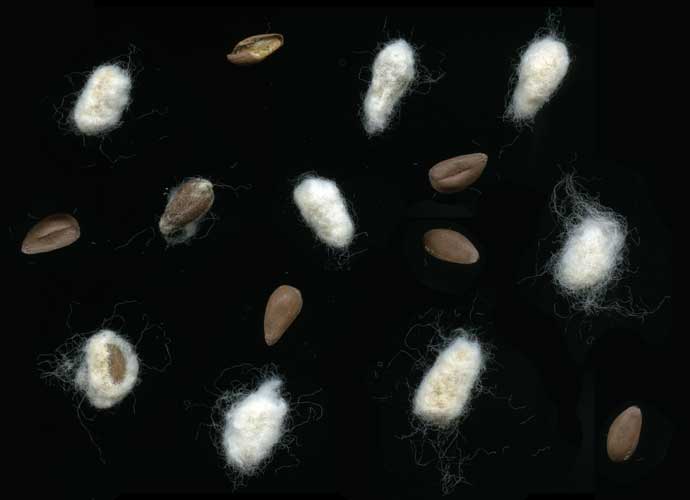John Lineback
Carolina Cottonseed
Today the inventor and agricultural pioneer John Lineback received a patent for the first cottonseed hulling machine.
He was based in Salem, North Carolina.
Today, cottonseed hullers are known as disc hullers, and they not only dehull oilseed shells like cottonseed and peanuts, but they also crush oilseeds such as soybeans.
Cotton is neither a fruit nor a vegetable. The fibers of the cotton plant are made of cellulose. The seed of the cotton plant attaches to the fibers after emerging from the fruit. After maturing and left to its own devices, the cotton plant seed would simply blow off the plant in the wind - which is how the plant would get distributed.
Cotton seeds are exactly what you might deduce: the seeds of the cotton plant. They are egg-shaped and are 3.5-10 mm long. The Latin name for the Cotton Plant is Gossypium ("gah-sip-EE-um"), and the seeds are richly covered with white or rusty-colored, long, woolly hairs, called lint. It is actually the lint on the outer part of the seed that is the main product used to make cotton textiles.
Lineback's machine dehulled the seeds. The hulls are the outer coverings of cotton seeds. Dehulling makes it possible to extract cottonseed oil from the seeds. The process of dehulling is pretty straight forward: after removing the lint, the hull is removed from the kernel by screening.
Cottonseed hulls are fibrous, and they also get used and incorporated into food for livestock like cattle and sheep.
There's one final note about whole cottonseed worth mentioning: Cottonseed is toxic to humans and most animals.
This post was featured onThe Daily Gardener podcast:
helping gardeners find their roots,
one story at a time

